
|   |

|   |
 e-mail: sunilkothari1933@gmail.com 10th edition of Parikrama dance festival Photos courtesy: Kalavardhini December 21, 2018 On the occasion of renowned Bharatanatyam exponent, choreographer, disciple of Acharya Parvati Kumar and Kitappa Pillai, Pune based Sucheta Bhide Chapekar's 70th birthday, Kalavardhini institute organized a four day dance festival from 6th till 10th December at Pune. Sucheta has carved a special niche for herself in the world of Bharatanatyam. Along with her guru Acharya Parvati Kumar she delved deep into compositions of Maratha rulers of Thanjavur, choreographed by Parvati Kumar and herself and later on with the assistance and guidance of Kitappa Pillai. 'Korvyanche Sahitya', the compositions of Shahaji and other rulers, have enhanced the Bharatanatyam repertoire. Maharashtra Sahitya Sanskriti Mandal has published 'Thanjavur Nritya Prabandha' pertinent to dance compositions of 18th century Maratha king Sarfoji. Sucheta did further research on compositions of Shahji of 17th century. She has been presenting them since 1970. The most significant seal of approval came from the Music Academy of Madras when Dr. V. Raghavan presented Sucheta in the Music Academy morning sessions before a galaxy of stalwarts and since then Sucheta has been performing it on many platforms within India and abroad. One more significant contribution is her creation of Nritya Ganga. She has extended the horizons of dance with her own understanding of the technique of Bharatanatyam and of Hindustani music. Nritya Ganga with use of Bharatanatyam, Hindustani music and pakhavaj, creating a parallel format Bharatanatyam, is a fantastic work of art. That many disciples of hers also perform Nritya Ganga validates her creative work. Sucheta is a gifted writer. In Marathi she has written 'Nrityatmika' which is a thoughtful perspective of an experienced dancer, translated into English by Priti Gosar Patil based in Richmond, VA. It was a pleasure to go through it along with her journey of dance, study of Natyasastra texts, Rasa Theory, reflections, research, and understanding of time tested tenets of Sanskrit texts, manuals, commentaries. Sucheta has internalized them well and she also performs in a flawless manner. Having known her for more than 50 years, it was a delight to watch her performance on her 70th birthday. I had attended her performance ten years ago when she celebrated her 60th birthday. The events were held at the spacious grounds of Renuka Swarup School, Pune. Besides being honoured by the chief guest, the revered musician Hridayanath Mangeshkar, Sucheta was felicitated by the retired Air Marshal and patron of Kalavardhini. Recalling her efforts of establishing Bharatanatyam in Maharashtra with traditional Marathi compositions of the Maratha rulers of Tanjore, Hridayanath mentioned how Sucheta had received support from vocalist Dr. Prabha Atre, the tabla wizard Suresh Talwalkar, musician Vasantrao Deshpande and others to go ahead and perform those compositions and bring back the glory of Maratha rulers, along with South Indian dance form of Bharatanatyam. Her innovations and experiments in Hindustani music, creation of Nritya Ganga and training an entire generation of young dancers were lauded. Hridayanath mentioned about honouring musicians with Hridayanath Mangeshkar Award from their Foundation, with rupees one and half lakh in previous years. He announced the award this year for Sucheta for her outstanding contribution. It was received with heartwarming applause. Sucheta began her performance with Saraswati Vandana and danced in praise of Lord Shiva with a song "Shankara teri jata me" using also a kavit to describe the lord's prowess. The use of Hindustani music and the accompaniment by the team of musicians was excellent. Sucheta mentioned about Shahaji's prabandha which Kitappa suggested she adopt in five jatis. Performing composition of Shahaji in Hindi language, a rare abhinaya daru, set to Bihag raga, she explained that the rare composition was precursor of a varnam. Till then varnam had not been performed as a part of Margam. "Sun sakhi piyu mora" was performed with images of how fish without water cannot live, how she can keep patience when he is away, her two eyes look everywhere for him. She further developed the song with abhinaya on whom should she ask, birds, wind and so on. The alternating nritta was arresting. A pada composition of Purandara Dasa in Kannada, "Jagadoddharana" had instant appeal. Yashoda wonders how come her son is the one for whose glimpse the gods thirst, and he is her beloved son. One who lifts mount Govardhana and dances for her at her cajoling him. That Parama Purusha Vasudeva, the supreme God, she has got as her son. Sucheta was encouraged to enact abhinaya to the popular Natyasangeet of Maharashtra by Vasantrao Deshpande. From Sangeet Soubhadra, Sucheta performed to a well known song in which Subhadra blames the scarf she had woven and was left behind by Arjuna, and says that she is envious of the scarf as it wraps round Arjuna. The delicate nuances, her movements of being shy, getting upset, moving in a manner holding her pallu, looking upset et al were charming, Sucheta is blessed with attractive personality and with advancing age she has maintained that charm in a sattvika manner. Whatever she enacts has an ennobling quality leading to higher state of enjoyment minus titillation or base sentiments. She concluded her performance with Marathi song "Aaj me Rama pahile" in Bhairavi raga. 'I saw lord Rama today' went the refrain. Investing it with sancharis of Rama, friend of Shabari, he accepted her berries which she had tasted, indeed a great luck that she saw Rama. She received standing ovation as audience was deeply moved by her artistry and flawless rendition at 70 years of age! What an inspiration she has been to her several disciples whom she has taught to maintain high standards. For some of us seniors it was also down memory lane. 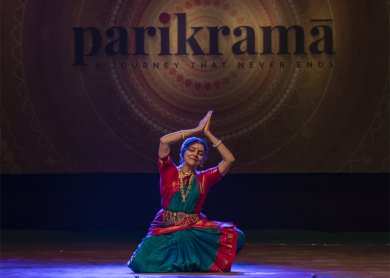 Sucheta Chapekar 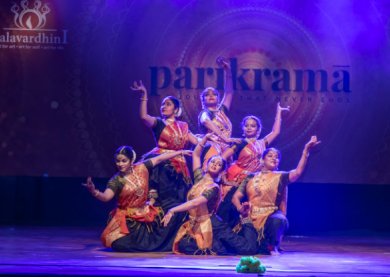 Arundhati Patwardhan & group On second day, performances by Sucheta's three disciples including her daughter Arundhati Patwardhan and brief performances by four senior legendary dancers C.V. Chandrasekhar (Bharatanatyam), Darshana Jhaveri (Manipuri), Sunayana Hazarilal (Kathak) and Kanak Rele (Kathakali/Mohiniattam) were held. The finale was Kathak by Rohini Bhate's disciples. It was indeed a most welcome idea to showcase the veteran senior legendary dancers to young generation and connoisseurs. Perhaps we will not be able to see them in future on one platform. Therefore the concept was worthy of organizing it. Ashish Khokar was to introduce them which he did with respect and warmth. However on account of time constraints the proposed dialogue with the artists had to be abandoned. Also unfortunately, C.V. Chandrasekhar after his Bharatanatyam presentation while returning to the wings, got disoriented, walked to the edge of the five feet high stage and before anyone could save him, fell down to the floor hurting his wrist and hip. The entire audience was in a state of shock. After some ten minutes, he regained his balance and was given immediate first aid and taken to green room for rest. One felt grateful to god that nothing untoward happened and he was safe. However the organizers will have to now learn a lesson from this incident. Senior artists past 80 - C.V. Chandrasekhar is 83 - need not be asked to perform. I understand that few months ago at Bharatiya Vidya Bhavan in Chennai, C.V.C sir had fallen flat on his face on stage after conducting a performance and had to be rushed to hospital. It is one thing to feel wonderful to die on stage when performing, but it is another thing when one falls off a stage before an audience. Even when the artist insists on performing, the organizers must use their discretion. C.V.C sir is well aware of his delicate health. He has become a legend for dancing, executing teermanams, taking perfect araimandi, and now does not have to prove anything. He has received moksha through dance already. He is a role model for male dancers but now he has to understand his limitations. 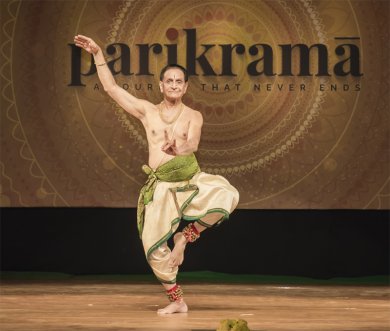 CV Chandrasekhar 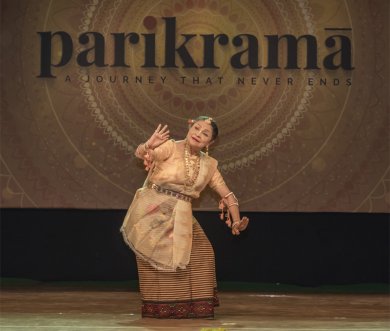 Darshana Jhaveri Darshana Jhaveri, past 75, the youngest of the four Jhaveri Sisters has earned fame for her graceful performances of Manipuri and her scholarship, complete dedication and performing classical dances as conceived by her Guru Bipin Singh. She and several other disciples of Guru Bipin Singh have been keeping his gharana intact, following it strictly and projecting his art. Darshana presented two items. Prabandha Nartana choreographed by Guruji using several elements of swara, sahitya, music, numbers like telena and various talas. It was an essay in nritta revealing Guruji's creativity within tradition. The other item was Ananga Akshepa. It has been now translated into Meitei language. In this Vidyapati's rare composition originally in Mythili language, "Kahe dahat tanu Madana hamara" - 'Why are you burning me, O Madana? You are mistaking me for Lord Shiva, who turned you into ashes. You see my bun with flowers and mistake it for Ganga flowing from Shiva's jata; you see kasturi paste round my neck and mistake it as poison mark on Shiva's neck when he drank Halahala poison; you see the garlands of pearls and mistake them as serpents round Shiva's arms. Please, O Madana, have mercy upon me and do not take revenge upon me.' One of the finest poems, Guru Bipin Singh has choreographed it in Manipuri with hastabhinaya and also mukhajabhinaya. He believed that even when Manipuri insists on angikabhinaya and the face does not express emotions, he insisted that abhinaya is part of classical traditions and must be employed. Darshana's abhinaya was restrained as it demands of a nayika's request to Kamadeva. Kathak dancer Sunayana Hazarilal, who has devoted her entire life in performing special items of Janaki Prasad Gharana, regaled the audience with special compositions based on bols of tabla. Her command over the complicated talas was noteworthy. The abhinaya to "Lashkar jane naa doongi" - I will not allow my beloved to go to war - was piece de resistance. The variety of ways in which she prevented the warrior from going to battlefield was just amazing. Finally she tells him that she will take the dagger and cut her heart and place it before him and the horse he was riding, if he will insist on going to war, and touched her beloved's feet surrendering to him. Such rare numbers one rarely sees nowadays. Sunayana gave glimpses of her excellent art.  Kanak Rele 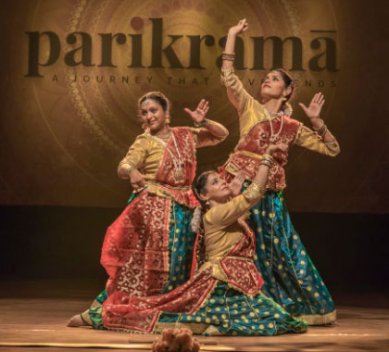 Rohini Bhate's disciples
Kanak Rele's name has become synonymous with Mohiniattam. What she has done to revive Kerala's dance form Mohiniattam, is similar to historic work done by Rukmini Devi to revive Bharatanatyam. A brilliant Kathakali performer having studied it from the young age of four from legendary Kathakali asan Karunakar Panicker, well known for stree veshams, Kanak mastered Kathakali and received great approbation for her performances and countless awards from Kerala cultural institutions. She took to Mohiniattam by learning from one Rajalakshmi, who had studied it in Kerala Kalamandalam. She was employed as a musician in Kanak's Nalanda institute. After performing few items every time over the years, Kanak planned to do further research in Kerala and visited Kerala Kalamandalam, stayed there, met few old veteran dancers who knew Mohiniattam and she filmed their dances, abhinaya, undertook further studies of Natyashastra texts like Balarama Bharatam and co-related movements mentioned in the text and worked towards building up a sound vocabulary of Mohiniattam, receiving cooperation from Kavalam Narayana Panicker, the poet, dramatist, musician, who established Sopanam style of music suitable for Mohiniattam and gave a place of pride to Mohiniattam on par with other classical dance forms. She also established Nalanda Dance Research Centre and later on affiliated college Nalanda Nritya Kala Mahavidyalaya with Bombay University, establishing degree courses in Bharatanatyam, Kathakali and Mohiniattam in Mumbai. Dedicating her life to dance, now past 80, she after knee surgery only performs sitting on a platform enacting abhinaya, with movements of the hands. Navarasas are at her beck and call. Her face registers subtle nuances without any effort. She chose to perform poem of Odiya poet Sitakant Mahapatra on Kubja, translated into Malayalam by Kavalam Panicker and also set to music by him. Kanak registered Kubja's agony on her face, as a maid, who had to apply chandan to Kamsa, the act she detested. Her only wish was to meet Lord Krishna and when she finally met him, she was turned into a beautiful maiden, her hunch was removed and she applied chandan to Lord Krishna. Kanak has interpreted the burden and the hunch as the baggage women carry because of patriarchy, and symbolically when the hunch is removed, that burden of patriarchy is also removed and women have become free. Kanak's performance received great applause. One of the rare dancers, to witness her abhinaya is indeed a rare opportunity. The performances by Arundhati Patwardhan, Rushali Chitrale, Rajakta Pavanaskar, Vaishali Tank, and Manasi Jog lived up to their reputation of having mastered the Nritya Ganga format. The Shiva Stuti in Nata Bhairava, Talamala using tritala, Jhaptala, Rupak and Ashta Mangal had all the elements of Hindustani music and talas executed on pakhavaj, with renderings of Kavits, offering audience an insight into Sucheta's innovations. These disciples of hers are in a class by themselves, dedicated and performing in a flawless manner - their coordination of movements, taking poses which illumine the narrative and further enhanced by excellent music left an indelible impression. One would like to congratulate Sucheta for preparing another generation which would carry on her tradition. Rohini Bhate's three disciples Prajakta Raj Atre, Manisha Abhay and Sharvari Jamenis rendered Ganesh Vandana as choreographed by Rohini. The iconic image of Ganesh with epithets like Lambodara, repeated and performed by each dancer brought the image alive. The movements and use of hastas were economical and dignified. They are well versed in Rohini's distinct style and projected with finesse. The dance to tritala, including tode, parans and other nritta numbers was an example of how Rohini evolved her special Kathak technique. They are well versed in Rohini's distinct style and projected it with very high quality of music. They chose for abhinaya, Amitabh Bachchan's poet father Harivansh Rai Bachchan's composition Madhur Prateeksha, choreographed by each one of them, depicting nayika waiting for union with the beloved. Each one had individual approach which made the abhinaya multi-layered and different. My only comment for these three brilliant dancers was regarding their aharya, which was too dazzling. A little sober selection of design and colours would enhance the visuals, because the dazzling costumes overpowered the presentation. Parikrama festival thus showcased besides Bharatanatyam, the salient features of Kathak form by other dancers, and in this case, as a tribute to pioneers like Rohini Bhate. On 8th December morning Sucheta had planned a conversation between her and me about my long career as a dance historian, scholar and a critic. She asked questions about recent trends of fusion in dance, anxiety about how to maintain tradition, about criticism and various related issues. To sum up, I said trends are changes which are bound to take place. What is constant is the change. Those attempts which have artistic truth would survive. Our collective worries are common. Times have changed. Young generation has so many options. They suffer from an onslaught of social media, whatsApp, information easily available on Google, which does not sensitize them to the poetry, and they all seem to be in a hurry to perform now at the drop of a hat. Among them some are steady and follow the course which is demanding but which is rewarding. Criticism is two edged sword. Only constructive criticism will be helpful for the scene and improvement, negative criticism should be avoided. In India, critics and dancers do meet each other (after a show) unlike in West, where they never meet each other to maintain objectivity. A critic and dancers can meet and critic may tell her where dance did not meet high standards and what a dancer could have selected to present in a manner that would have created appropriate aesthetic experience. Instead of putting in print something which would be negative, a positive approach is the best thing. Negative criticism rankles for a long time and should be avoided. Also one has to accept that changes are bound to take place. But there would always be an audience, however small, for classical arts. The artists who performed in the evening were Indira Kadambi, Vidhya Subramanian and Lavanya Ananth. Titled Tridhara, each one of them put their best foot forward and displayed their command over technique and involvement with the form, selecting choice numbers whereby the audience had glimpses of broad canvass of Bharatanatyam. Indira Kadambi has recently moved to Bangalore after a long stay in Chennai. Disciple of Bangalore based gurus Usha Datar and Narmada, Indira took intensive training in abhinaya under Kalanidhi Narayanan. The news of her marathon performance of Margam for four hours in Chennai before she relocated to Bangalore had reached me. I had seen her thirty years ago when she had started dancing at Protima Bedi's Nrityagram. However, I had not seen her performances in recent years. Though of tiny build, she is a power house of energy and performs with zest. Her lines are clear, geometrical, movements arresting and overall she exudes joy. The prayer "Jaya jaya Mata Saraswati" in Saraswati raga followed by jatiswaram was indicative of her firm and thorough training under her gurus. Nowadays one rarely sees jatiswaram performed by senior dancers. Indira moved with ease and infused the movements with a feeling of pleasure, moving on either side horizontally. Enacting abhinaya to ashtapadi "Pashyati dishi dishi" from Gita Govinda, in Desh raga, she portrayed the helplessness of Radha looking for Krishna in various directions, embracing clouds, preparing bed with lotus and other flowers, decorating herself as Krishna and falling on the way searching for Krishna. Indira as Sakhi, pleaded with Krishna to go unto Radha, describing her pathetic state as she was suffering in separation. Portrayal of distressed Radha was etched with feeling. But it was in Devaranama of Haridas that she was in her element. Describing the pranks of Krishna, shamelessly making advances to gopi, sleeping next to her and when gopi admonishes him declaring him as Purandara Vithala, Indira displayed various emotions in a captivating manner. She concluded her performance with C.V. Chandrasekhar's choreographed Tillana in Simhendra Madhayam raga paying tribute to the senior guru. 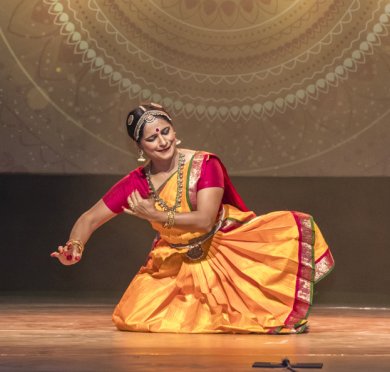 Indira Kadambi 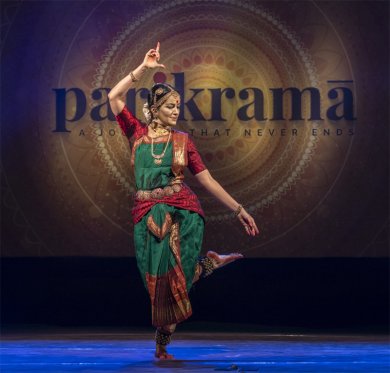 Vidhya Subramanian Vidhya Subramanian is endowed with beauty and an arresting stage presence. Disciple of S.K. Rajaratnam Pillai of Vazhuvoor bani, and for abhinaya having studied under Kalanidhi Narayanan, she has been dividing her time between USA and India and performing in Europe and other countries. She also has been creating solos on women characters like Draupadi, displaying empowerment of women. Vidhya chose to present compositions dwelling upon the greatness of the divine beings, powerful goddesses and gods. Noteworthy among them was Shambhu Natanam, in which Patanjali praised Lord Shiva, his stotra with vowels remains unparalleled, Nandi and Bhrungi also danced creating feeling of wonder among devotees. Vidhya's Durga with powerful images reverberated with Shakti's various forms wielding different weapons. The iconic images with exquisite Sanskrit poetry were endowed with beauty. The 6th ashtapadi from Gita Govinda, "Sakhi he keshi mathanamudaram" describing the first encounter of Radha and Krishna was delicately enacted, bestowing upon bashful Radha feeling of joy and also with overwhelming shyness, when Krishna saying sweet nothings removes her garments for physical union. The shringara found felicitous expression with restraint and auchitya, appropriate presentation. Switching off from divine love, Vidhya selected javali in Khamas, Ye ra ra in which nayika begs of the lover to be with her as the moment was right for love making. The delicate feelings of love were registered on her face. It was a light number, but highly enjoyable. Vidhya concluded her recital with Rajarajeswari ashtakam which was replete with devotion. I saw Lavanya Ananth for the first time in dance-drama Anjaneyam produced by Apsara Arts, Singapore, and choreographed by Aravinth Kumarasamy two years ago. She was cast in role of Sita. Her abhinaya was very moving and her personality suited Sita's image. During India Asia week in June, I got an opportunity to see her solo Bharatanatyam performance at Esplanade. As a worthy disciple of S.K. Rajaratnam Pillai, she impressed one and all with her consummate artistry. Her performance at Parikrama further enhanced that feeling. Performing Sita Bhumi Pravesha based on the great Malayali poet Kumar Asan's poem, sung by Hariprasad in a varnam format in Ragamalika, it offered Lavanya opportunity to explore the character of Sita with subtle nuances. When pregnant Sita was sent to forest by Ram to follow his rajyadharma, on a mere remark by a washerwoman, casting aspersions on her character, Sita suffered humiliation. She questioned Ram how come when she followed as his dutiful wife to forest, and even after Ravana kidnapped her, when Ram won the battle and brought Sita, she went through agni pariksha and did not have to prove anything for her chaste character, how come Ram sent her away and that too when she was pregnant. She laments and decides to be one with her mother earth, which accepts her, her purity, and with all love that nature bestows upon her. Sita becomes one with earth with her Bhumi Pravesha. Lavanya's enactment was very touching and did justice to not only the poet's inner thoughts, but also made it clear that injustice was done to one so pure, and just to follow duty as an emperor, who must submit to people's opinion and Sita's character should be above any doubt. It is heart rending and one's sympathy lies with Sita. In concluding tillana, Lavanya wove in the love of Radha and Krishna imaginatively, performing it with abandon. These three artists chose their numbers carefully to bring out their best and varied aspects. Bharatanatyam as a dance form has such vast scope where an individual dancer can contribute what she plans in an artistic manner. The three dancers with their Tridhara succeeded in generating rasanishpatti. 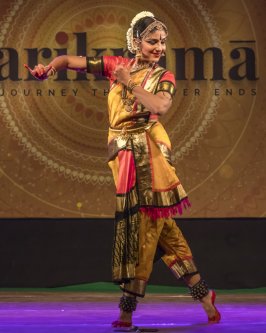 Lavanya Ananth 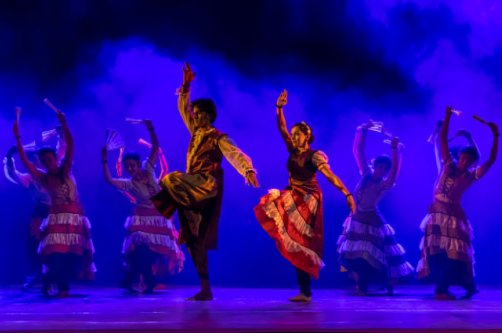 Don Quixote On 9th December morning I missed the seminar Trividha by Parimal Phadke on Bharatanatyam, Shashwati Garai Ghosh on Odissi and Shama Bhate on Kathak, and evening presentation of Don Quixote by Sheejith Krishna and his Sahrdaya group. I had seen it in Washington at Kennedy Centre three years ago and was impressed by the sheer scale and the way it was dramatized. I also remember that Sheejith had taken some of us to show the statue of Don Quixote in the compound of the Kennedy Centre, which many of us had missed even when we have visited Kennedy Centre many times! Parikrama festival was an unqualified success focusing on the life time work of a dancer who has contributed a lot to dance. Sucheta's entire team did an excellent job of stage management and hospitality and thanks to their untiring efforts, daily a large turnout of audience was a sight that filled all of us with joy.  Dr. Sunil Kothari is a dance historian, scholar, author and critic, Padma Shri awardee and fellow, Sangeet Natak Akademi. Dance Critics' Association, New York, has honoured him with Lifetime Achievement award. Post your comments Please provide your name and email id when you use the Anonymous profile in the blog to post a comment. All appropriate comments posted with name & email id in the blog will also be featured in the site. |